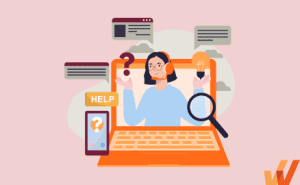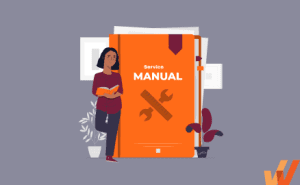Delivering a personalized, seamless customer experience is fundamental for businesses to stand out, retain customers, and expand accounts. Customers expect more than basic support service—they want efficient, thoughtful interactions that show a brand values their time. To stay competitive, companies must shift from simply solving problems to transforming the customer experience in ways that build lasting loyalty.
Trust quickly fades when customers feel neglected or unsupported, leading them to look for alternative solutions. 38% of customers say their trust in a brand depends on the quality of service they receive. That’s why embracing a CX transformation mindset is essential—every interaction should work to strengthen trust and deepen customer relationships.
A well-designed customer service training program is at the heart of this transformation. By enabling service and support teams with the tools, skills, and confidence they need, businesses can consistently deliver the kind of service that keeps customers returning.
In this article, we’ll explore why customer service training is crucial, when to implement training and upskilling programs, different types of training, and the tools and metrics that help track customer support and service request management success.
What Is Customer Service Training?
Customer service training equips support teams with the skills and knowledge to effectively handle customer inquiries, resolve issues, and create positive experiences. It involves teaching communication, problem-solving, conflict resolution, and product expertise to ensure consistent, high-quality service.
With service and support agent training, businesses can enhance customer satisfaction and loyalty, improve customer experience, and enhance the overall performance of service agents. Well-trained service agents are the backbone of great customer service and long-term success.
Why Is Customer Service Training Important?
Even with the best product or service, mistakes or miscommunications happen. A new user is unsure how to use a new software tool, a customer receives a defective product, has a question about something they just bought, a shipment gets lost in the mail, or they’re charged for the wrong item. As customers ourselves, we’ve all been there.
Regardless of how big or small the issue is, the customer service team’s job is to resolve it. If done correctly and efficiently, they can smooth even the most significant problems—but the reverse is also true.
If the process is complicated, inconvenient, or frustrating for the customer, even the slightest problems can drive a once-loyal buyer away for good. This is where customer service training becomes so important. When your support team is properly trained, they can:
- Provide a better customer experience: Well-trained support agents have the skills and knowledge to handle customer interactions effectively, creating personalized solutions that improve satisfaction and leave a lasting positive impression.
- Shorten support resolution times: Training equips agents to resolve issues more quickly, reducing time-to-resolution. This boosts efficiency and enhances the customer experience.
- Retain more customers: Effective customer service training helps prevent customer churn and protects up to 9.5% of annual revenue by addressing customer experience challenges and fostering loyalty.
- Boost employee confidence and empowerment: Confidence from training enables agents to take initiative, handle complex issues, and deliver proactive support, improving both the customer experience and operational efficiency.
- Gain more customer referrals: Exceptional service provided by well-trained agents leads to satisfied customers who are more likely to recommend your business, driving organic growth through word-of-mouth.
- Adapt to changing customer needs: Regular training ensures agents stay informed about product updates and evolving customer preferences, allowing the business to remain agile and customer-centric.
- Promote a positive company culture: Training fosters a company-wide commitment to customer satisfaction, improving teamwork and collaboration, which translates into better service across the organization.
When Should Customer Service Training Happen?
Customer service training isn’t a one-and-done task. It’s an ongoing process that requires individuals and the team to consistently revisit the tools, methods, and strategies they’re using to support customers. This can only be done when a robust learning and development strategy is implemented.
Here are some of the most critical times to provide customer service training:
- New hire onboarding: During the employee onboarding process, new hires need training not only on tools and systems, but also on your products and services. This ensures they can provide excellent customer service from day one.
- Upskilling and reskilling to meet evolving customer needs: Customer expectations change, so support teams must be continuously upskilled to adapt to new technologies, communication methods, and customer preferences.
- After internal process changes: Any changes in internal processes require updates to the customer service training manual and process documentation, followed by training to ensure the team stays productive and efficient.
- Continuous skill development: Ongoing training helps refine and enhance skills, keeping the team sharp and improving overall performance. Continuous development is essential for staying ahead in customer service.
Related Resources
Types of Customer Service Training
There is no one-size-fits-all approach to training your customer service team. Various customer service training methods exist, each with unique benefits and drawbacks. A comprehensive training program can use a mix of methods to ensure all bases are covered.
Here are four of the most common types of customer service training:
- Instructor-led training: This traditional approach involves a trainer, either in-person or virtually, guiding employees through new processes. It’s ideal for new hires or significant process changes but requires a dedicated time commitment.
- Online learning: Trainees complete modules or courses independently, usually at their own pace. It’s useful for ongoing updates and minor changes, especially when employees are self-motivated.
- Blended learning: Combining instructor-led training with online learning, blended learning offers a comprehensive approach. Trainees benefit from personal attention during live sessions and the flexibility of completing online modules.
- On-demand performance support: This training method allows employees to access resources and knowledge as needed during their daily tasks, helping them resolve issues on the spot or refresh their memory.
Components of Customer Service Training
Providing comprehensive and effective training to customer service teams is crucial for organizations looking to thrive in today’s competitive business landscape. Well-trained customer service reps not only address customer needs, but also create positive brand experiences that drive loyalty and satisfaction.
Effective training goes beyond product knowledge and standard responses. It develops competencies and fosters a customer-centric mindset, leading to a workforce that consistently exceeds expectations and builds enduring relationships.
Here are the top five components of effective customer service training:
1. Communication skills for customer support agents
Effective communication is the core of exceptional customer service. Customer support agents must be adept at verbal and written communication to interact with customers professionally and empathetically. Verbal communication skills include:
- Active listening
- Using clear and concise language
- Employing appropriate tone and language for each customer interaction
- Asking relevant questions
- Providing accurate information or solutions
Strong written communication skills are also essential for customer support agents. They must be able to articulate ideas clearly through email, live chat, or social media platforms. Writing with proper grammar, tone, and formatting is crucial to ensure effective and professional communication.
Agents should be trained in adapting their writing style to suit different customer preferences or situations, whether it’s a formal business inquiry or a friendly support conversation.
2. Empathy and emotional intelligence in customer interactions
Customer support reps need to develop a deep understanding of customers’ emotions, challenges, and frustrations. By putting themselves in the customers’ shoes, agents can create a supportive and empathetic environment that fosters trust and customer loyalty. Training in empathy helps reps acknowledge and validate customers’ feelings, respond with sensitivity, and provide personalized solutions that address their unique concerns.
Emotional intelligence goes hand in hand with empathy. It involves recognizing and managing one’s own emotions as well as understanding and empathizing with the emotions of others. Customer support reps with high emotional intelligence can navigate challenging situations calmly and defuse conflicts effectively.
3. Problem-solving and conflict-resolution skills
Customer support reps often deal with unique customer issues that require quick thinking and problem-solving abilities. Training should empower agents with problem-solving frameworks, analytical skills, and critical thinking techniques to diagnose and address customer problems efficiently. Reps should learn to identify root causes, brainstorm solutions, and implement effective problem-solving strategies.
Conflict resolution skills are equally important for customer support reps. They should be trained to de-escalate tense situations, manage customer complaints, and find mutually beneficial resolutions. Conflict resolution training teaches agents active listening, empathy, negotiation, and diplomacy. Agents should be able to navigate difficult conversations, diffuse customer frustration, and turn potentially negative experiences into positive ones.
4. Product and service knowledge
Customer support reps should have a deep understanding of the products or services they represent. Comprehensive product and service knowledge empowers agents to provide accurate information, answer customer inquiries, and troubleshoot effectively, so training programs should cover product features, functionalities, common issues, and troubleshooting techniques.
Customer support reps should also be trained to stay up-to-date with product updates, new releases, and industry trends. Product knowledge training ensures they can provide customers with the most relevant and timely support. Encouraging continuous learning and providing access to knowledge bases, FAQs, and product documentation equips reps with the necessary resources to resolve customer queries promptly.
5. Time management and multitasking abilities
Time management and multitasking are critical skills for customer service reps who handle multiple interactions simultaneously. Managing time well helps reps prioritize tasks, meet deadlines, and offer prompt, efficient service.
Key aspects of time management training include:
- Prioritizing tasks by urgency and importance
- Creating to-do lists and using productivity tools
- Setting realistic goals for effective time allocation
- By mastering these techniques, agents can reduce customer wait times and improve satisfaction.
Multitasking training focuses on:
- Handling multiple inquiries without losing service quality
- Managing interruptions and switching between tasks seamlessly
- Staying focused on each interaction while keeping workflows organized
Training should emphasize balancing speed and accuracy. When reps optimize these skills, they can handle more inquiries, reduce response times, and boost the support team’s overall productivity and effectiveness.
12 Customer Service Training Ideas
Employees can resist training because it’s often dull—but it doesn’t have to be. Getting creative with how you train your customer service team can help them stay engaged with the new information and retain more of what they’ve learned.
Here are some ideas and tips for training your customer service team in 2024:
- Simulate customer interactions with role-playing and experience scenarios
- Foster a positive culture through mentorship, job shadowing, and buddy programs
- Build a comprehensive knowledge base and process documentation
- Gamify learning and incentivize course completion
- Provide crisis and real-time response training
- Hold presentation and demonstration sessions
- Conduct a skill gap analysis and diversify training methods
- Implement microlearning for key customer service frameworks
- Use Loom to create video tutorials
- Use Whatfix to create interactive guided flows
- Train on product knowledge and soft skills
- Collect feedback from your team
1. Simulate customer interactions with role-playing and experience scenarios
Prepare your customer service agents for real-world situations by incorporating immersive role-playing exercises and customer experience simulations. Start by crafting role-playing scenarios that allow agents to practice handling common support ticket issues and more complex customer inquiries in a low-pressure environment. This gives them the confidence to respond effectively when those situations arise naturally.
Next, incorporate conflict-resolution exercises where agents learn how to navigate difficult conversations with frustrated or upset customers. Role-playing tense situations equips them with the skills to de-escalate conflict and resolve issues with empathy and professionalism.
Customer experience simulations put agents in the customer’s shoes. This powerful exercise helps them understand the customer’s perspective, fostering empathy and ultimately improving their service quality. Through these hands-on training approaches, agents gain the practical experience to deliver outstanding customer support.
PRO TIP
With Whatfix Mirror, customer service teams and contact centers can create sandbox environments of their help desk application and service request management processes to provide hands-on training experiences for support agents without the risk of live customer interactions. Build simulated scenarios to accelerate new service agents’ time-to-proficiency, allowing them to handle real customer interactions faster. Create in-app guidance like Task Lists, Flows, and Smar Tips to drive the adoption of complex tasks and workflows.

2. Foster a positive culture through mentorship, job shadowing, and buddy programs
Building a positive company culture starts with creating strong connections within your team. One effective way to do this is through mentorship, job shadowing, and buddy programs that foster collaboration, learning, and mutual support. Start by implementing a job shadowing program, where new hires or employees aiming for promotions can observe seasoned team members in action. This real-time learning helps them see how customer service situations unfold and provides them with a mentor for guidance throughout the day.
To enhance this learning experience further, set up a buddy program that pairs new hires with experienced colleagues. This encourages knowledge sharing, helps new employees feel more comfortable in their roles, and provides them with a supportive environment to practice and discuss what they’ve learned.
Taking it a step further, establish a formal mentor program to provide ongoing, one-on-one guidance. Mentorship offers a personal touch, allowing team members to ask questions, get feedback, and develop in a more individualized setting.
By nurturing these relationships, you’ll help cultivate a positive company culture where employees feel supported, engaged, and empowered to succeed. A happy, well-supported team is more likely to care about the service they provide, leading to better performance and stronger customer relationships.
3. Build a comprehensive knowledge base and process documentation
A robust knowledge base is an invaluable resource for your customer service team, offering them a quick and reliable way to find answers when they encounter challenges. By building an easily accessible, well-organized knowledge base, agents can search for solutions or reference important information without interrupting their workflow. This boosts efficiency and helps ensure every customer interaction is handled confidently.
Equally important is the quality of your process documentation and standard operating procedures (SOPs). Outdated or unclear instructions can create confusion and hinder your team’s performance. Regularly reviewing and updating your process documentation ensures that it’s clear, up-to-date, and aligned with your current operations. This allows agents to follow best practices seamlessly and avoid unnecessary delays in providing support.
By combining a well-maintained knowledge base with detailed, user-friendly process documentation, your team will have the tools they need to resolve customer issues quickly and accurately, while maintaining a consistent level of service across the board.
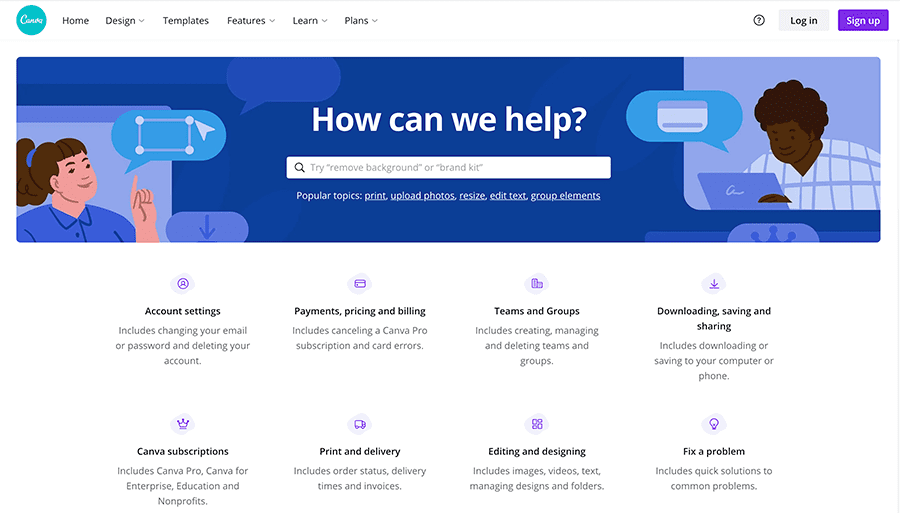
4. Gamify learning and incentivize course completion
Learning doesn’t have to be a chore—by gamifying your training programs, you can make continuous education engaging and enjoyable for your customer service team. Introduce friendly competition, where team members earn points, badges, or rewards for completing modules or mastering new skills. This approach boosts participation and encourages employees to stay motivated as they strive to achieve milestones.
To further enhance engagement, incentivize course completion by offering meaningful rewards such as promotions, bonuses, or other perks. Recognizing employees’ hard work reinforces the importance of continuous learning and gives them a tangible reason to push themselves to improve.
By making training fun and offering rewards for success, you create an environment where employees are excited to learn, leading to higher participation and better performance overall.
5. Provide crisis and real-time response training
Preparing your customer service team for crises is essential to maintaining calm and effective support during high-pressure situations. Crisis training equips your team with the communication skills needed to handle tough conversations with customers when things go wrong. It also helps them manage the stress and pressure that comes with resolving issues in difficult times, ensuring they remain composed and professional.
In addition to crisis preparedness, real-time response training offers immediate, situation-specific guidance that empowers agents in the moment. Whether it’s accessing in-app support, reinforcement training, or on-demand resources, this model ensures agents get exactly what they need when they need it. By combining crisis training with real-time learning tools, your team will be well-equipped to provide fast, efficient, and empathetic support, even in the most challenging scenarios.
With a digital adoption platform like Whatfix DAP, enable your service agents with in-app guidance and support, like Flows to guide users them help desk support processes and Smart Tips to provide additional help to remind them to take a specific action.

With Whatfix Self Help, service agents are empowered with an in-app resource center that overlays their help desk tasks and contact center workflows. It integrates with your knowledge repositories, including your SOPs, scenario training, scripts, playbooks, and training resources – allowing service agents to search and find any documentation or help content right inside their digital workplace.

6. Hold presentation and demonstration sessions
Encouraging your team to engage in presentation sessions allows them to dive deep into specific topics, tools, or methods, fostering a collaborative learning environment. Presentations not only give team members the chance to share their insights, but also open up opportunities for asking questions, sharing ideas, and generating discussions that can improve overall team understanding and performance.
In addition to presentations, demonstration sessions offer a hands-on approach by walking the team through key processes, tools, or products in action. Whether hosted live for real-time interaction or pre-recorded for flexible access, these sessions provide practical learning experiences that help agents better understand the tools they use and how to apply them effectively in customer interactions.
By combining both presentations and demonstrations, you create a dynamic learning environment where agents can actively participate, ask questions, and gain a practical understanding of the tools and strategies that drive success in customer service.
7. Conduct a skills gap analysis and diversity training methods
Understanding where your team’s strengths and weaknesses lie is essential for targeted growth. Conducting a skills gap analysis helps identify areas where your customer service team may need additional development, allowing you to tailor training that addresses these specific needs. By pinpointing gaps, you can ensure that training efforts are focused on the areas that will have the greatest impact, helping to elevate the overall performance of your team.
Diversifying your training methods can keep the learning process engaging. Relying on the same approach can lead to boredom and disengagement. Mixing up your training techniques—whether through workshops, hands-on activities, video tutorials, or interactive sessions—creates a more dynamic learning experience that keeps your team interested and involved.
Combining a targeted skills gap analysis with varied training methods ensures that your team is both continuously improving and engaged in the learning process, making the training more effective and enjoyable.
✓ Thank you, the checklist will be sent to your email
8. Implement microlearning for key customer service frameworks
Microlearning is a powerful way to keep your team focused and engaged by delivering training in bite-sized, easily digestible sessions. Instead of overwhelming agents with long lessons, break down key customer service concepts into smaller, manageable chunks they can complete between meetings or during downtime. This approach keeps their attention, improves retention, and makes ongoing learning more accessible.
One of the key frameworks to incorporate through microlearning is the LAST (Listen, Acknowledge, Solve, Thank) method. This simple yet effective framework ensures that customer service agents follow a structured approach to resolving issues, from listening to the customer’s concerns to thanking them for their patience. Integrating frameworks like LAST into microlearning sessions ensures your team absorbs critical problem-solving techniques while keeping the learning experience flexible and efficient.
With microlearning, you empower your customer service team to continuously refine their skills in a way that fits naturally into their daily routines, ensuring consistent growth and better performance.
9. Use Loom to create video tutorials
Coordinating live demos for global teams can be difficult, and relying on meetings isn’t always the best use of time. That’s where Loom comes in. As a video tutorial creation tool, Loom allows you to record your screen, camera, and microphone to create clear, step-by-step walkthroughs for complex processes.
By using Loom, your team can access these tutorials whenever they need them without having to schedule a live session. It’s an efficient way to ensure everyone has access to the same information, helping employees learn at their own pace while keeping training consistent and flexible.

10. Use Whatfix to create interactive guided flows
For larger organizations, managing customer service training across different teams and tools can be challenging. As we’ve previously mentioned throughout this article, Whatfix offers an effective solution by creating in-app, interactive training content that adapts to the needs of your customer service agents in real-time.
With Whatfix, you can build a variety of in-app training resources, including:
- Interactive walkthroughs
- Product tours
- Tooltips
- Task lists
- Embedded knowledge bases with FAQs and links to supporting documents
These tools provide hands-on, contextual training that helps employees learn by doing, improving efficiency and ensuring they have the support they need when they need it.
11. Train on product knowledge and soft skills
To deliver exceptional customer service, your team needs to be well-versed in both the products they support and the interpersonal skills that make great service possible. Product knowledge training ensures that your agents are experts in your offerings and familiar with every feature, update, and nuance. By making product knowledge a core part of onboarding and scheduling regular refresher sessions, you empower your team to assist customers and provide accurate, timely information confidently.
Equally important are the soft skills that allow agents to connect with customers on a personal level. Listening actively, showing empathy, and communicating clearly are all essential traits for resolving issues and creating positive experiences. While these skills can be challenging to teach, incorporating practice exercises that focus on professionalism, patience, and managing stress will help your team navigate even the most difficult interactions with grace.
By combining deep product knowledge with strong soft skills, your team will be fully equipped to handle any customer interaction with confidence and care.
12. Collect feedback from your team
Training shouldn’t be a one-way street. Actively seeking feedback from your customer service team not only improves the effectiveness of your training but also shows your commitment to their professional development. Ask for their thoughts on past courses—what worked, what didn’t, and how it could be improved. Encourage them to share what areas they’d like to focus on in future training sessions, whether it’s mastering new tools or developing soft skills.
By involving your team in shaping the training process, you make them feel more valued and invested in their own growth. This collaborative approach can lead to more engaged employees who are eager to improve and contribute to the success of the organization. Regular feedback also ensures your training program remains relevant and responsive to the team’s evolving needs.
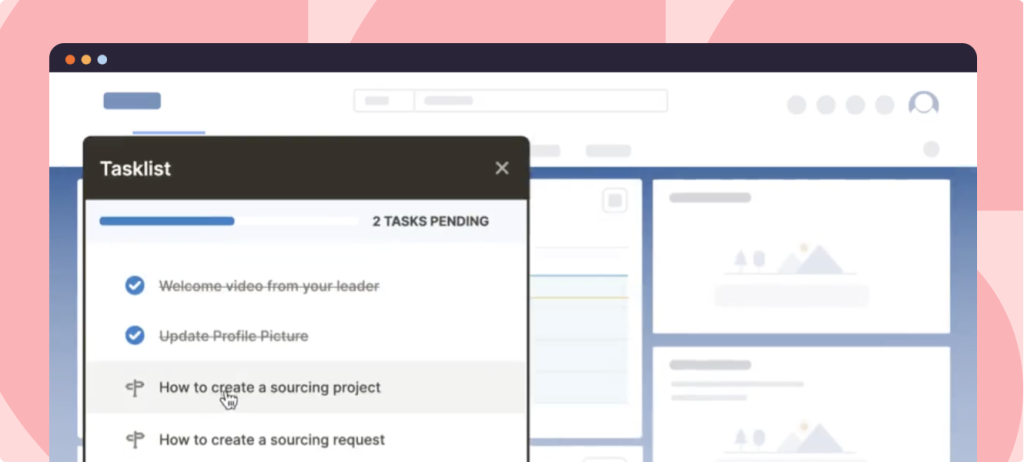
→ Guide users through complex apps with contextual, role-based in-app guidance.
→ Support users at the moment of need with AI-powered Self Help and embedded workflow assistance.
→ Analyze user engagement to identify friction points and optimize business processes.
Customer Service Training Metrics & KPIs
Measuring the effectiveness of your customer service training is key to understanding its impact on skill development, employee engagement, and customer satisfaction. By tracking the right KPIs, you can pinpoint what’s working and where improvements are needed, helping you continuously refine and enhance your training efforts.
Here are the most important KPIs to monitor to gauge the success of your customer service training programs:
- Average response time: Tracks how long it takes for an agent to respond to a customer inquiry, helping to measure the efficiency of training in improving response times.
- Average handle time: The length of time a service agent spends on a call with a customer on a support issue.
- Time-to-resolution: This metric reflects the average time it takes to resolve support issues from when a customer submits a ticket until it’s closed.
- Customer satisfaction score (CSAT): This measure measures CSAT through post-interaction customer satisfaction surveys, providing insight into how well customer service reps meet expectations after receiving training.
- First call resolution (FCR) rate: The percentage of issues resolved during the first contact. A high FCR indicates that training has equipped agents to determine customer needs efficiently.
- Customer retention rate: Reflects the percentage of customers who stay with the company over time. Higher retention signals that training has improved customer loyalty and satisfaction.
- Net promoter score (NPS): Gauges the likelihood of customers recommending your company. Tracking NPS before and after training helps assess the impact on customer loyalty and advocacy.
- Customer effort score (CES): Measures how easy it is for customers to interact with your business. Lower CES after training indicates reduced customer effort and improved service efficiency.
- Customer churn rate: Monitors the percentage of customers leaving the company. A lower churn rate after training suggests improved customer retention and satisfaction.
Best Customer Service Training Software
Technology has transformed customer service training, making it more dynamic, engaging, and effective. Modern tools and platforms accelerate learning, keep employees engaged, and equip them with the skills needed to deliver exceptional service.
The right customer service training software simplifies the process and helps your team learn more efficiently. Here are the top tools to consider for building a successful training program:
1. Learning management system (LMS)
A learning management system (LMS) is software that instructors use to create, manage, and monitor training programs. It makes it easy to deliver content and materials, track who is completing them, and provide progress reports on training initiatives.
Best LMS for customer support training: TalentLMS
Talent LMS is a comprehensive learning management system with a unique customer service training solution. This solution allows managers to create on-demand course content at a low price. Courses can be adapted for blended learning, and Talent LMS meets leading eLearning content standards like SCORM and CMI5.
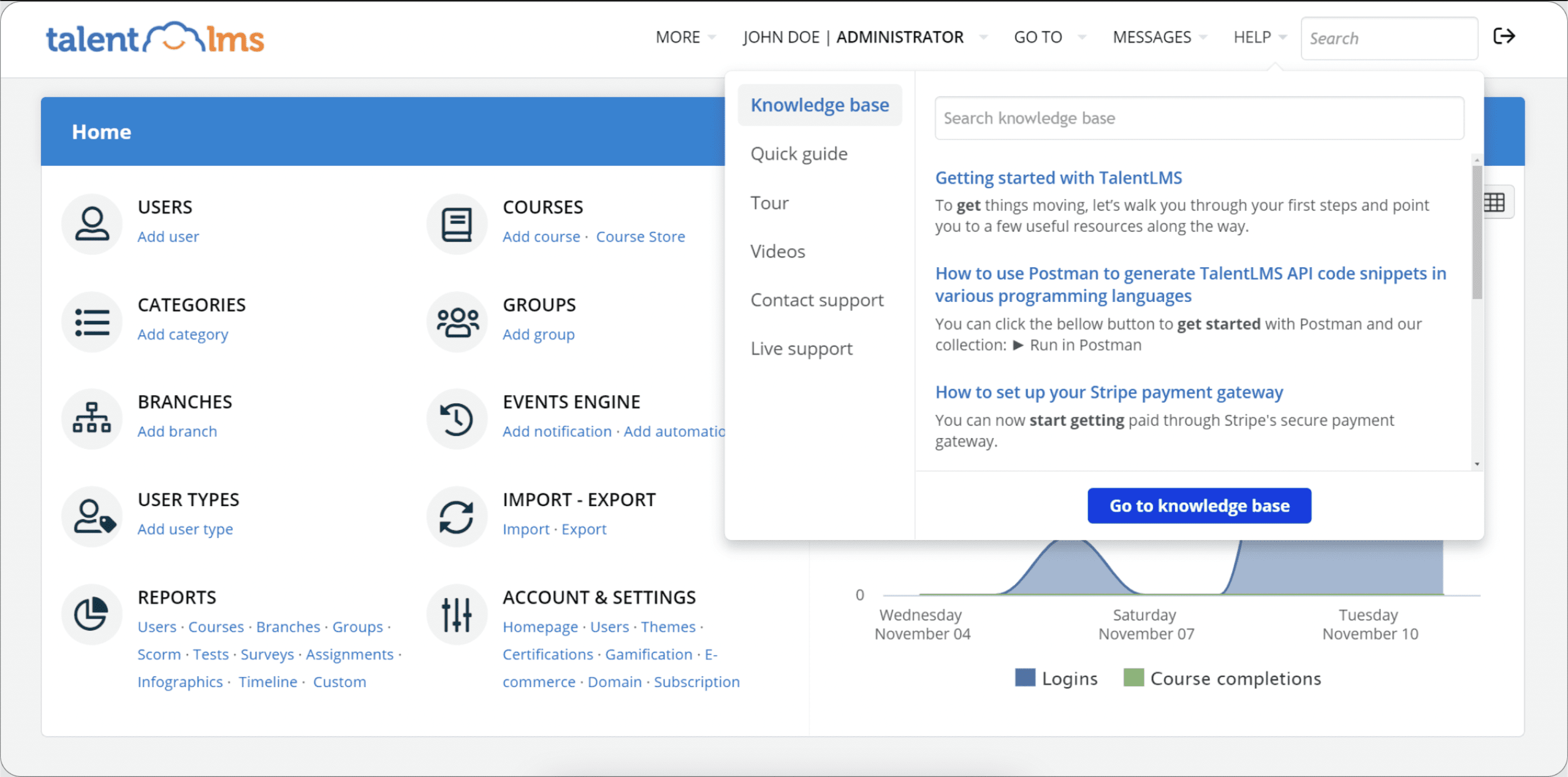
2. Internal knowledge base or internal wiki
An internal knowledge base or internal wiki is a set of company guides, documents, updates, and databases available to all employees. Employees can easily share, collaborate, and access the information they need whenever they need it. For service teams, it allows leaders to organize SOPs, scenarios, playbooks, and process guides into a centralized repository.
Best knowledge management solution: Zendesk
Zendesk is a help desk system with knowledge management features, both for internal service agents to find internal playbooks, scenarios, and process documentation – but also for customers to find support documentation. Other examples of knowledge base software include Confluence, Guru, and Document360.
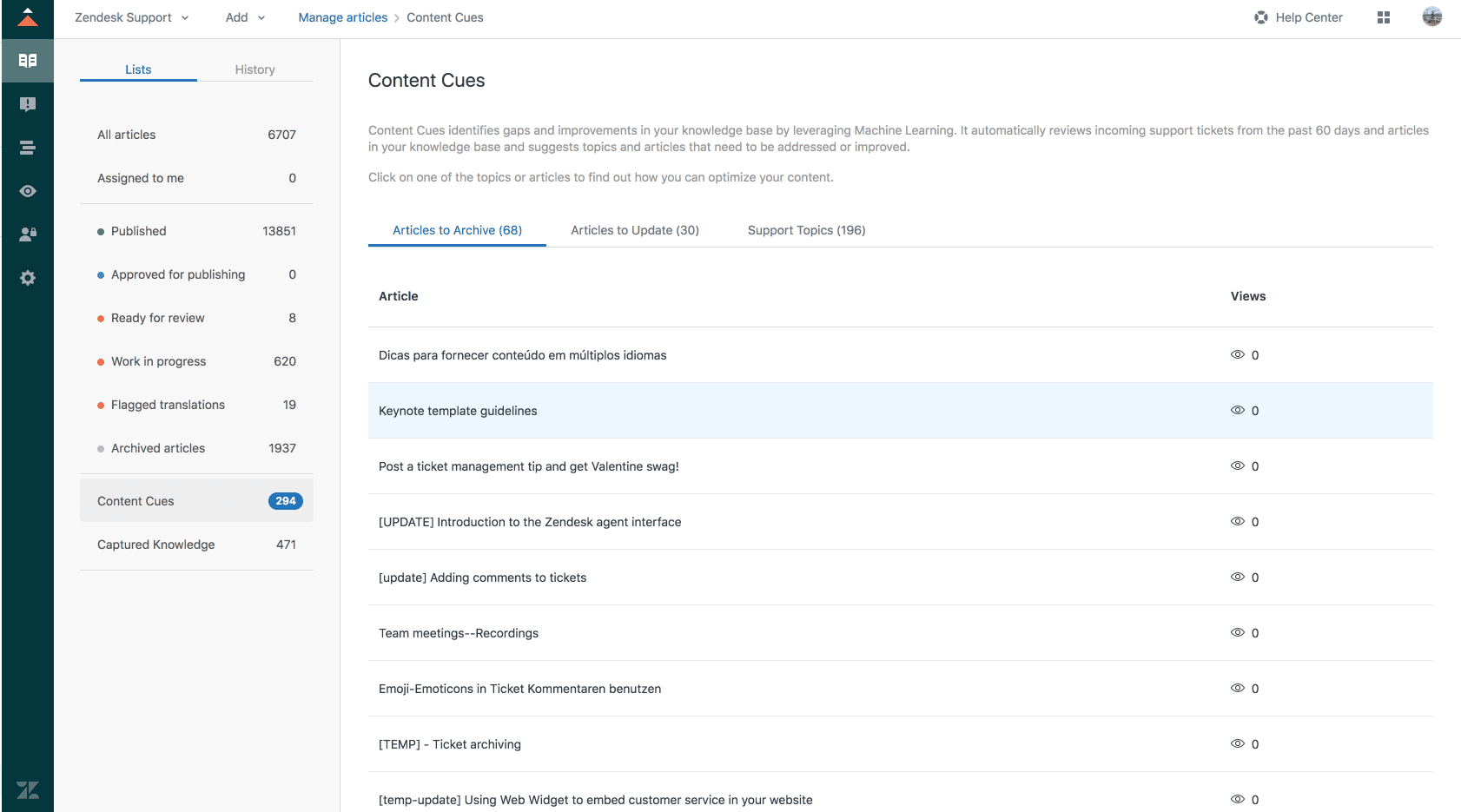
3. Digital adoption platform (DAP)
A digital adoption platform (DAP) integrates with another application to guide the user through its use. Add walk-throughs, videos, self-help menus, and more to provide (digital) hands-on support. A DAP enables end-users to find answers with in-app self-help. It also provides performance support to customer service reps to quickly find the best practices, processes, procedures, and more when dealing with customer service issues.
Best digital adoption platform: Whatfix
Whatfix enables customer service teams with a no-code tool to create in-app guidance and support experiences. With Whatfix:
- Accelerate time-to-proficiency for new customer service agents with simulated training experiences and in-app Task Lists that help them learn by doing.
- Enable customer support agents with in-app Flows that guide them step-by-step through support ticket workflows.
- Provide support agents with timely Smart Tips to provide additional context, remind them of best practices, and nudge them to take certain actions.
- Use Pop-Ups to alert agents of new training or changes to support ticket flows.
- Self Help integrates your knowledge repositories into one in-app help center, allowing agents to search for documentation for any scenario or situation inside their digital workplace.
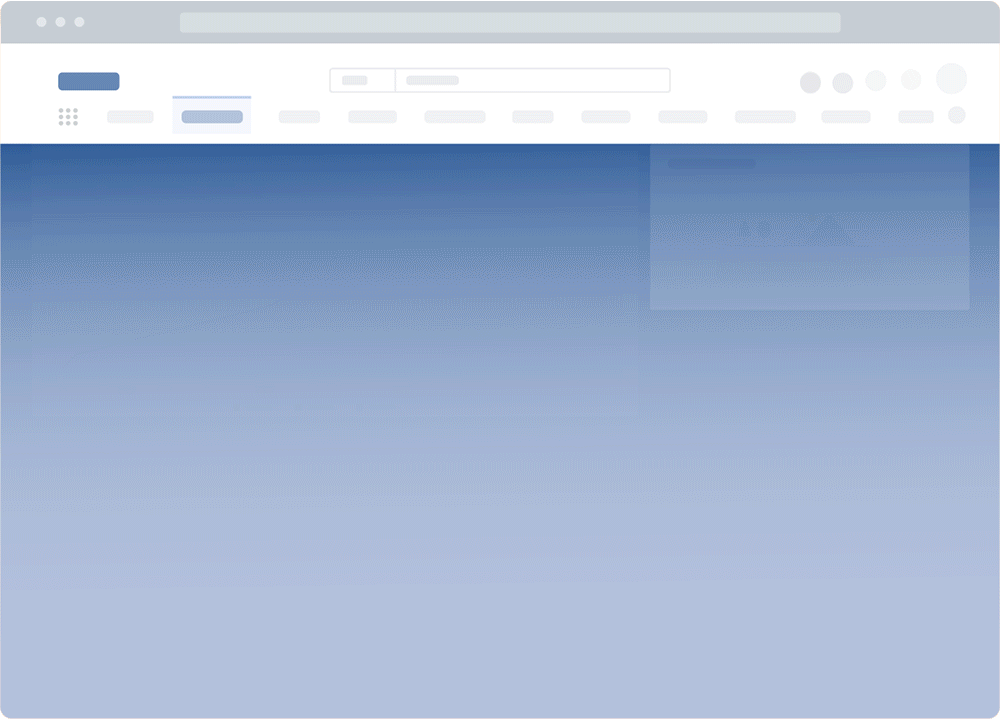
4. Online course providers
These platforms make it easy for team members to learn something new with minimal investment from the organization.
Best online course provider: Udemy
Udemy for Business provides a wide range of customer service courses tailored to support teams of all sizes. With courses on everything from communication skills to conflict resolution and handling difficult customers, Udemy allows teams to build custom learning paths to suit their specific needs. The platform offers certificates upon completion and features assessments to track employee progress. Udemy for Business also supports blended learning with both video courses and interactive elements, making it a versatile option for training.

Customer service training clicks better with Whatfix
Technology has revolutionized customer service training, turning it into a dynamic, interactive experience that empowers teams to perform at their best. Online platforms, real-time feedback, and accessible training tools have reshaped traditional methods, making learning more effective and engaging for customer service professionals.
As customer expectations evolve, organizations need a solution that harnesses the power of technology to keep teams ahead. That’s where Whatfix steps in.
As a digital adoption leader, Whatfix helps teams excel by offering in-app guidance, walkthroughs, and task lists that make training seamless. From mastering new tools to following best practices, Whatfix ensures customer service teams are always ready to deliver exceptional support.
With Whatfix’s Self Help feature, agents can quickly access the information they need, right when they need it, reducing downtime and boosting efficiency.
Choosing Whatfix can transform your customer service training into a strategic advantage—improving performance, customer satisfaction, and overall business success. The platform’s intuitive design, robust capabilities, and seamless integrations make Whatfix the ideal partner for enhancing your training programs.
Ready to get started? Explore Whatfix now!

